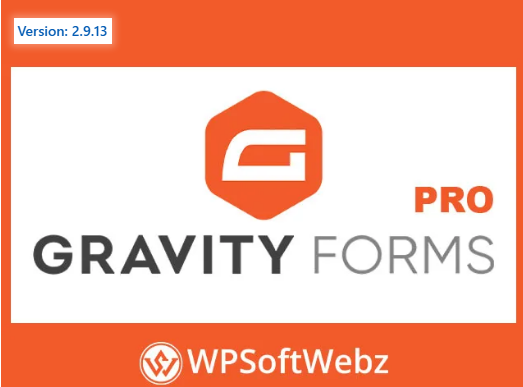How to Optimize Forms Using the Gravity Forms Plugin for SEO

Maximizing SEO Potential with Gravity Forms
Gravity Forms, a premier WordPress form builder, offers robust tools to create dynamic, user-friendly forms that can significantly enhance a website’s SEO performance. By leveraging its features, businesses can improve user engagement, reduce bounce rates, and boost conversions, all of which contribute to better search engine rankings. This article explores how to optimize forms using Gravity Forms Plugin to align with SEO best practices, ensuring forms are functional, accessible, and optimized for search engines.
Crafting SEO-Friendly Form Structures
Utilizing Accessible Form Fields
Creating SEO-friendly forms begins with accessibility. Gravity Forms supports WCAG 2.1 AA compliance, ensuring forms are navigable for all users, including those with disabilities. Use descriptive field labels and placeholders to clarify input requirements. For example, instead of a generic “Name” field, use “Enter Your Full Name” to enhance clarity. Incorporate ARIA labels for screen readers to improve accessibility, which search engines like Google prioritize. Accessibility not only improves user experience but also signals to search engines that the website is inclusive, potentially boosting rankings.
Implementing Conditional Logic for Relevance
Conditional logic in Gravity Forms allows dynamic form adjustments based on user inputs, reducing form abandonment and enhancing user engagement. For instance, a contact form can display additional fields for specific inquiries (e.g., “Product Support” vs. “General Feedback”) only when relevant. This streamlined experience keeps users on the page longer, reducing bounce rates—a key SEO metric. Configure conditional logic in the form editor by setting rules to show or hide fields, ensuring forms remain concise and relevant.
Enhancing User Experience with Form Styling
Leveraging the Orbital Theme for Visual Appeal
Gravity Forms’ Orbital theme, introduced in version 2.5, allows customization of input fields, labels, and buttons without coding. Adjust font sizes, colors, and border radii to align forms with the website’s branding, creating a cohesive user experience. For example, set submit buttons to high-contrast colors to improve visibility and click-through rates. A visually appealing form encourages completions, signaling positive user interaction to search engines. Access the Orbital theme via the WordPress block editor by selecting a form and switching to “Orbital” under Form Styling.
Optimizing Form Load Times
Page speed is critical for SEO, and Gravity Forms supports optimization through AJAX-enabled submissions. Enable AJAX in the form’s advanced settings or by adding ajax="true" to the shortcode. This reduces page reloads, cutting load times from 5–8 seconds to approximately 1 second for multi-page forms. Additionally, defer non-critical scripts using Gravity Forms’ built-in deferred attribute to prevent render-blocking, further enhancing performance. Optimized forms improve user retention and SEO rankings.
Integrating SEO Plugins for Enhanced Visibility
Using Yoast SEO with Gravity Forms
Integrating Gravity Forms with Yoast SEO, via add-ons like GravityKit’s Social Sharing & SEO extension, allows optimization of form-related content. Set focus keyphrases for pages containing forms, ensuring they align with target keywords like “contact us” or “request a quote.” Customize meta titles and descriptions using Gravity Forms merge tags to dynamically insert user inputs, making content unique and relevant. Yoast’s analysis tools provide feedback to achieve green scores, indicating well-optimized content for search engines.
Adding Schema Markup for Rich Results
Incorporate schema markup to forms to enhance search engine understanding. Use Gravity Forms’ hooks to add structured data, such as ContactPage schema, to forms embedded on key pages. This can improve click-through rates by enabling rich snippets in search results. For example, a form for event registrations can include Event schema to display dates and locations directly in Google. Consult Gravity Forms’ developer documentation for hooks like gform_after_submission to implement schema programmatically.
Reducing Spam for Cleaner Data
Implementing Anti-Spam Measures
Spam submissions can clutter analytics, skewing user behavior data and harming SEO. Gravity Forms offers built-in anti-spam tools like Google reCAPTCHA v3 and honeypot fields. Enable these in the form settings to filter out bots without impacting user experience. Additionally, plugins like Gravity Booster provide keyword and email blacklisting to block spam containing terms like “SEO service.” Clean data ensures accurate tracking of user interactions, supporting SEO efforts.
Securing Form Data
Data security enhances user trust, indirectly boosting SEO through increased engagement. Gravity Forms employs robust encryption and supports GDPR-compliant consent fields. Configure forms to validate user consent for data storage, ensuring compliance with privacy regulations. Secure forms reduce bounce rates by fostering trust, as users are more likely to complete forms on a site perceived as safe.
Driving Conversions with Strategic CTAs
Optimize call-to-action (CTA) buttons within Gravity Forms to drive conversions. Use action-oriented text like “Get Your Free Quote” instead of generic “Submit.” Customize button styles in the Orbital theme to make them prominent, increasing click-through rates. For multi-step forms, break content into digestible pages with clear progress indicators to reduce abandonment. High conversion rates signal to search engines that the form provides value, enhancing page rankings.
Tracking and Analyzing Form Performance
Use Gravity Forms’ entry management tools to track submissions via the WordPress dashboard. Export entries to CSV for analysis in tools like Google Analytics to monitor user behavior. Set up UTM parameters for form submissions to track traffic sources, refining SEO strategies. For example, analyze which keywords drive form completions to optimize content further. Regular monitoring ensures forms remain effective, supporting long-term SEO success.
By leveraging Gravity Forms’ accessibility, performance optimizations, and integrations, businesses can create SEO-optimized forms that enhance user experience, reduce bounce rates, and drive conversions, positioning websites to outrank competitors in search results.
- Art
- Causes
- Crafts
- Dance
- Drinks
- Film
- Fitness
- Food
- Games
- Gardening
- Health
- Home
- Literature
- Music
- Networking
- Other
- Party
- Religion
- Shopping
- Sports
- Theater
- Wellness
- Script
- App
